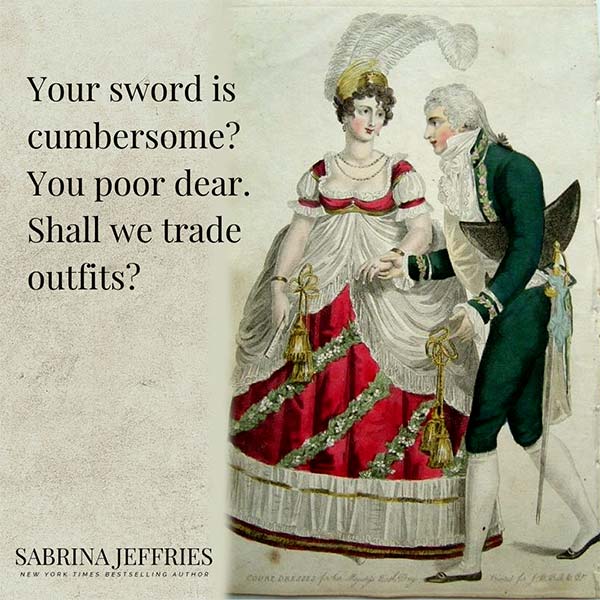Men’s Attire

I believe I’ve written about how ladies dressed for their debuts (with pictures), but I don’t think I’ve talked much about how the guys who went to these things (and there were some accompanying the ladies) had to dress. Although I did describe it in The Bachelor, I go into more detail in A Duke for Diana. It’s fascinating, really, since they were all expected to dress in 18th-century attire, down to their powdered wigs and outdated coats! It would be sort of like having to wear jackets with big shoulder pads and Flock of Seagulls hair to a dressy event today. Oddly enough, they also had to carry ceremonial swords. Imagine dealing with those when normally if you carried something for protection, it was a pocket pistol. Below is a print that shows exactly how both sexes were expected to dress.






